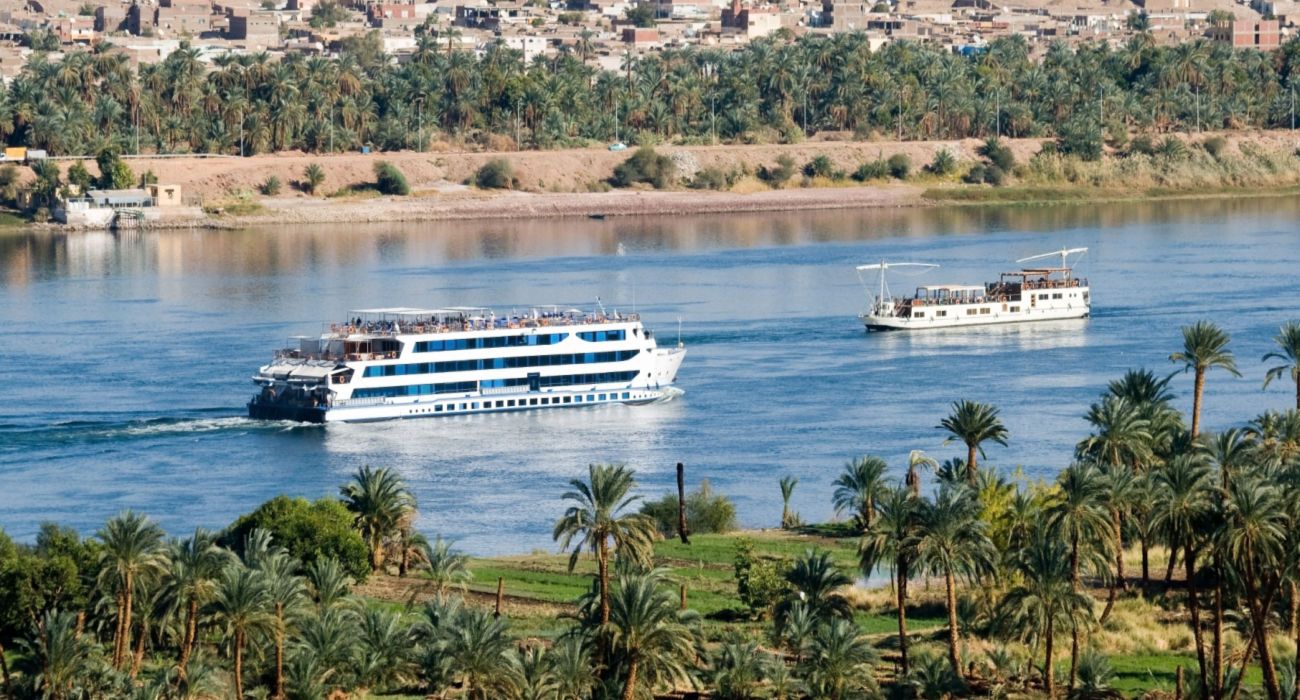Quick Links
The Nile is the world's longest river draining the heart of Africa from Lake Victoria and beyond. While the northern reaches of the Nile are lush and green (and great for whitewater rafting), it is the meandering lower Nile that runs through the sands of Egypt that capture the imagination. The Nile was thought of as a god by the ancient Egyptians, and Egypt has always been utterly dependent on the Nile - so much so that it is called the "lifeblood of Egypt."
Arguably the best way to see the Nile is with a Nile cruise. It is possible to take short, hour-long, or half-day cruises on the Nile, but to really explore the ancient river and what it means for the history of Egypt, a multi-day cruise is the best. Take a four-day cruise on the Upper Nile and create lasting memories of Egypt.
Four-Day Cruise On The Nile
Exploring Egypt can be chaotic and stressful, but an organized tour makes everything relaxing and simple. The 4-day Nile cruise provides a relaxing and stunning insight into Upper Egypt and its long and storied history.
The tour includes Upper Egypt's major attractions on Aswan, Abu Simbel, and the Valley of the Kings, all in one convenient package.
- Destinations: Aswan, Abu Simbel, Valley Of The Kings, Edfu
- Duration: 4 Days
- Includes: Transfers, Excursions, Accommodation, Experienced Guide, Hot Air Balloon Ride
- Meals: Breakfast & Lunch Included
- Guide: An Experienced Egyptologist
- Price: From $350
The tour includes hotel transfers, trips to major temples, boat accommodation, and an Egyptologist guide. One of the main activities is a hot air balloon river over the ancient temples of Luxor.
Along one's cruise of the Nile, one will enjoy in-depth commentary that provides a deep dive into the ancient history of Egypt. One will learn the incredible facts and history of some of the world's most prized monuments - like Abu Simbel.
Entrance fees to the sites are not included (it's approximately an extra $85 per person for all the sites).
Why The Nile Defines Ancient Egypt
The Nile is much more than just an Egyptian river - it drains a total of eleven countries in Africa. It is by far the primary source of water for Egypt (as well as Sudan and South Sudan). If there were no Nile, there would be no Egypt.
- Length: Approx. 4,130 Miles
The ancient Egyptian kingdoms (and every other civilization in Egypt since) were built on the Nile. The Nile was the lifeblood and highway of the country. It provided Ancient Egypt with fertile soil when it flooded its banks every year and provided irrigation. It was the artery used for transporting materials for building projects (like the pyramids).
No one can understand Egypt (past or present) without first understanding the Nile. It always had a profound influence on how the ancient Egyptians saw both themselves and the world around them. It shaped their religion and culture.
Without the Nile, Egyptians would have been little more than desert - it is the Nile that brings a long ribbon of life into the otherwise barren desert.
Why The Temples Of Abu Simbel Are The Highlight Of The Cruise
The first thing that comes to mind when people mention Egypt is normally the pyramids. These are built downstream around the modern city of Cairo. But go upstream, and one will find other colossal monuments that must be part of any Egyptian itinerary.
Besides the temples at Luxor, one of the greatest timeless attractions is the Temples of Abu Simbel and the colossal statues of Ramesses II that keep guard of the temples.
- Builder: Ramesses II
- Dedicated: To Ramesses II Himself (The Small Temple is To Queen Nefertari)
- Built: Approx. 1,264 BC to 1,244 BC
- Rediscovered: 1813
- Relocated: 1967
These had long been lost to the sands of Egypt. After they were abandoned, the sands of the desert slowly covered them over the course of centuries and millennia. They were rediscovered in 1813 and dug out in the years following.
In 1967 the temples and statues were cut up and moved to higher ground in 1967 to save them from flooding following the construction of the Aswan Dam. Thanks to these efforts, one can take a cruise up the Nile and wonder in bewilderment at Ancient Egypt.

